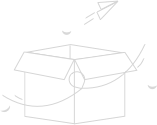-
Word3
普通类 -
- 支持
- 批判
- 提问
- 解释
- 补充
- 删除
-
-
Word3
realistic
1. Police have to be realistic about violent crime.
2. As an adult, you can assess the situation realistically.
sculptor
1. This is what the sculptor must do.
2. A sculptor is someone who creates sculptures.
consequently
1. Consequently I am able to show interest in him as a person.
2. Consequently, individuals and organizations take comfort in knowing all the answers and risks from the start.
Giotto di Bondone
1. The technique was used on works by the 14th century artist Giotto di Bondone.
2. Giotto di Bondone is considered by critics to be one of the founders of the Italian Renaissance.
renaissance
1. Popular art is experiencing a renaissance.
2. Ours can be a time of a new renaissance of values, of justice, of freedom from want and from fear.
the Renaissance
1. The tradition of these decentralized city-states that were the heart of the Renaissance.
2. Describe the aims and outcomes of the Renaissance.
humanistic
1. Religious values can often differ greatly from humanistic morals.
2. You don't need a humanistic education in order to become a herdsman.
perspective
1. He says the death of his father 18 months ago has given him a new perspective on life.
2. Remember to keep things in perspective.
Masaccio
1. This technique was first used by Masaccio in 1428.
2. After all, the Capodimonte is filled with masterpieces from the world famous Farnese Collection, some 800 paintings by such artists as Titian, Raphael, Masaccio and Mantegna.
masterpiece
1. His book, I must add, is a masterpiece.
2. The whole thing was a masterpiece of crowd management.
impressionism
1. Impressionism has long been one of the most popular art movements.
2. He stressed character and expression rather than perspective and physical accuracy; he was already experimenting with impressionism.
impressionist
1. An impressionist is an entertainer who does amusing imitations of well-known people.
2. Based on his fondness for Impressionist art, though, he is likely to be agreeable and conscientious.
post-impressionist
1. Paul Cezanne, usually categorized as a Post-Impressionist, can be considered as their predecessor.
2. They were the earliest known post-Impressionist master works.
landscape
1. The boy painted a landscape on paper.
2. He thumbtacked the picture of landscape to the wall.
critic
1. The critic’s criticism was turned against himself.
2. He was critic and theorist. What I discovered was his critical writings.
bronze
1. The statue was cast in bronze.
2. These ancient weapons are all cast out of bronze.
Mona Lisa
1. Almost everyone knows the painting, Mona Lisa, but not everyone knows of its bizarre history.
2. And he painted her portrait--one of the great paintings of all time, right up there with the "Mona Lisa"--as a final, loving tribute.
Leonardo da Vinci
1. Mona Lisa is a world-famous portrait painted by Leonardo Da Vinci in the 16th Century during the Renaissance period.
2. Not to mention Leonardo Da Vinci who has conceptualized a helicopter, a tank, concentrated solar power and a calculator in c. 1500.
Michelangelo
1. Michelangelo said, “A man paints with his brains and not with his hands.
2. The drawings of Michelangelo were recently exhibited in New York.
canvas
1. We need a piece of canvas that weathers well.
2. They toted canvas sacks over their shoulders.
Picasso
1. He quoted the example of Picasso.
2. The painter modeled his style after that of Picasso.
effectively
1. Some tips on how to negotiate effectively for what you want.
2. If you can use a word correctly and effectively, you comprehend it.
Matisse
1. His paintings have outstanding style of Matisse.
2. Its aesthetics have influenced many western artists, including Picasso and Matisse.
Manhattan
1. The island of Manhattan is a cozy village populated by more than seven million fascinating individuals who all behave like they own the sidewalk.
2. Builders working on a new subway station at the southern tip of Manhattan have found the remains of a stone wall thought to be part of a fort that protected the city in the late 17th century.
Guggenheim Museum
1. In 2008, his animations formed the backdrop for a night of music and science at the Guggenheim Museum called “Genes and Jazz.”
2. Andre Kikoski also has upcoming projects at the Guggenheim Museum and the Museum for African Art.
display
1. Let's display the figures and see what we have.
2. Department stores display their goods in the windows.
circular
1. The log was rent to pieces by a circular sawing machine.
2. In my one memorable exchange with him, I pointed out that his argument on the question at issue was circular.
metropolitan
1. Not as metropolitan than some of the other parts.
2. Since more than half of the world’s people now live in such metropolitan areas, that is an important question.
Monet
1. Monet described his attempts to observe and capture the colors in nature thus: “I’m chasing the merest sliver of color.
2. But this rarely works-after all, a knowledgeable collector isn't going to buy a stolen Monet that he can't display publicly.
Whitney
1. That may be extreme, but Ms. Whitney argues that the boom years are not coming back anytime soon.
2. Prof. CROSS: You know the - you remember that song that Whitney Houston wrote, "The Greatest Love of All"?
Madison
1. On Monday morning Jemmy sauntered on the road of Madison Square.
2. But if you live in a little town like Madison, Wisconsin, there is, really, no red eye.
-
-
- 标签:
- 教学
- museum
- mona
- display
- renaissance
- 跨越式
- 2.
- 1.
- whitney
- renaissance.
- guggenheim
- monet
-
加入的知识群:

.jpg)

学习元评论 (0条)
聪明如你,不妨在这 发表你的看法与心得 ~